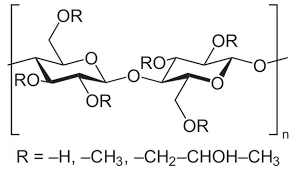
វិច្ឆិកា . 08, 2024 21:36 Back to list
hydroxyethylcellulose powder
Understanding Hydroxyethylcellulose Powder A Versatile Ingredient in Modern Applications
Hydroxyethylcellulose (HEC) is a water-soluble polymer derived from cellulose, a natural polymer that is abundant in the plant kingdom. With its unique properties, hydroxyethylcellulose powder has gained significant attention in various fields such as pharmaceuticals, cosmetics, food, and construction. This article explores the characteristics, applications, and benefits of hydroxyethylcellulose powder as a versatile ingredient.
Properties of Hydroxyethylcellulose Powder
Hydroxyethylcellulose powder is known for its excellent water solubility. Upon dissolution in water, it forms a viscous gel, making it an ideal thickening agent. This solubility is enhanced by the modification of cellulose, which allows HEC to dissolve in both hot and cold water, broadening its usability across various temperature settings.
The viscosity of hydroxyethylcellulose can be easily modified by adjusting its concentration, making it highly adaptable to different formulations. Additionally, HEC is non-ionic and does not interact with ionic compounds, which is advantageous in many applications, particularly in cosmetics and personal care products. Its stability under a wide range of pH levels and temperatures also contributes to its versatility, allowing it to be effectively used in diverse environments.
Another key property of hydroxyethylcellulose is its ability to form films, which makes it suitable for products that require a protective barrier. This film-forming property lends itself well to applications such as coatings and polymer blends.
Applications of Hydroxyethylcellulose Powder
1. Pharmaceuticals In the pharmaceutical industry, hydroxyethylcellulose is often utilized as a thickening and stabilizing agent in suspensions and ointments. Its ability to enhance the viscosity of solutions makes it valuable in creating consistent and effective drug formulations. Furthermore, HEC is used as a binder in tablets, improving the mechanical integrity and release profile of active ingredients.
2. Cosmetics and Personal Care HEC is a common ingredient in cosmetics due to its thickening and emulsifying properties. It is found in lotions, creams, shampoos, and gels, helping to improve texture and stability. Additionally, its film-forming properties aid in creating products with a smooth application, providing a long-lasting tactile experience on the skin or hair.
hydroxyethylcellulose powder

3. Food Industry In the food sector, hydroxyethylcellulose serves as a stabilizer and thickener. It is used in dressings, sauces, and dairy products to enhance viscosity and improve mouthfeel. As a food additive, HEC is recognized as safe for consumption, making it a preferred choice for texture modification in various food applications.
4. Construction Hydroxyethylcellulose is increasingly being employed in the construction industry, particularly in formulations for adhesives, sealants, and cements. Its water retention properties help improve workability and enhance adhesion, ensuring the durability of construction materials.
5. Agriculture In agricultural applications, HEC is utilized as a soil conditioner and a thickener for pesticides and fertilizers. By improving the spreadability and retention of agricultural products, hydroxyethylcellulose contributes to more efficient usage and application.
Benefits of Hydroxyethylcellulose Powder
The benefits of hydroxyethylcellulose powder are numerous. Its non-toxic nature and biodegradability align with modern consumer preferences for eco-friendly products. The versatility of HEC allows manufacturers to create customized formulations tailored to specific requirements, streamlining product development across various industries.
Additionally, hydroxyethylcellulose contributes to improved product performance without compromising safety or efficacy. Its ability to enhance texture, stabilize formulations, and prolong shelf life makes it a valuable ingredient in many formulations.
Conclusion
Hydroxyethylcellulose powder stands out as a multifunctional ingredient with a wide range of applications across various industries. Its unique properties, combined with its adaptability and safety profile, position HEC as an essential ingredient in modern formulations. As industries continue to embrace innovative solutions, hydroxyethylcellulose is likely to play an increasingly significant role in developing products that meet the evolving needs and preferences of consumers. Whether in pharmaceuticals, cosmetics, food, or construction, HEC remains a testament to the ingenuity of using natural polymers to create versatile and effective solutions.
-
Versatile Hpmc Uses in Different Industries
NewsJun.19,2025
-
Redispersible Powder's Role in Enhancing Durability of Construction Products
NewsJun.19,2025
-
Hydroxyethyl Cellulose Applications Driving Green Industrial Processes
NewsJun.19,2025
-
Exploring Different Redispersible Polymer Powder
NewsJun.19,2025
-
Choosing the Right Mortar Bonding Agent
NewsJun.19,2025
-
Applications and Significance of China Hpmc in Modern Industries
NewsJun.19,2025







